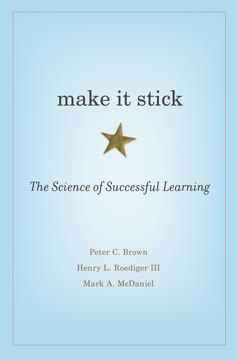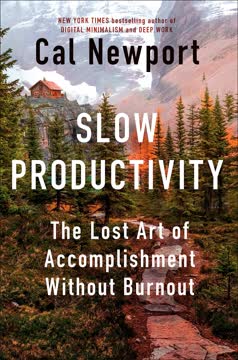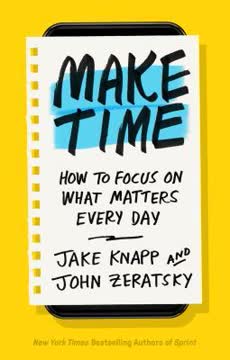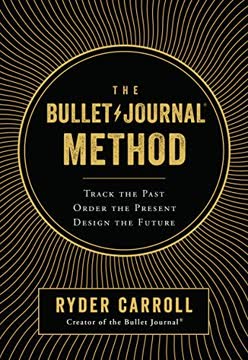मुख्य निष्कर्ष
1. स्लिप-बॉक्स विधि: नोट-लेने और ज्ञान प्रबंधन के लिए एक क्रांतिकारी दृष्टिकोण
"स्लिप-बॉक्स वह खोया हुआ कदम प्रदान करता है जो किसी चीज़ पर काम को वास्तविक काम में बदल देता है।"
स्लिप-बॉक्स प्रणाली एक नोट-लेने और ज्ञान प्रबंधन की विधि है जिसे निक्लास लुहमान, एक प्रसिद्ध जर्मन समाजशास्त्री, ने विकसित किया था। इस प्रणाली के मूल में तीन मुख्य घटक होते हैं:
- क्षणिक नोट्स: विचारों की त्वरित, अस्थायी यादें
- साहित्यिक नोट्स: आपने जो पढ़ा है उसका संक्षिप्त सारांश
- स्थायी नोट्स: आपके मौजूदा ज्ञान से जुड़े हुए सुव्यवस्थित विचार
इस प्रणाली की शक्ति हमारे सोचने की प्रक्रिया को बाहरी रूप देने की क्षमता में निहित है। आपस में जुड़े हुए नोट्स का एक नेटवर्क बनाकर, हम एक "बाहरी मस्तिष्क" बनाते हैं जो हमें विचारों को विकसित करने, कनेक्शन बनाने और समय के साथ अंतर्दृष्टि उत्पन्न करने में मदद करता है। यह दृष्टिकोण नोट-लेने को एक निष्क्रिय गतिविधि से एक सक्रिय सोच उपकरण में बदल देता है।
स्लिप-बॉक्स विधि के प्रमुख लाभ:
- जानकारी को ऑफलोड करके संज्ञानात्मक भार को कम करता है
- विचारों के साथ निरंतर जुड़ाव को प्रोत्साहित करता है
- अप्रत्याशित कनेक्शन और अंतर्दृष्टि की सुविधा प्रदान करता है
- जटिल विचारों को विकसित करने के लिए एक संरचित दृष्टिकोण प्रदान करता है
2. लेखन ही सोच है: बाहरी संरचना की शक्ति
"लेखन, बिना किसी विवाद के, सोचने, पढ़ने, सीखने, समझने और विचार उत्पन्न करने के लिए सबसे अच्छा साधन है।"
लेखन के माध्यम से सोचना स्लिप-बॉक्स विधि का एक मौलिक सिद्धांत है। अपने विचारों को लेखन के माध्यम से बाहरी रूप देकर, हम अपने आप और अपने विचारों के साथ संवाद में संलग्न होते हैं। यह प्रक्रिया हमें अपने सोच को स्पष्ट करने, हमारी समझ में अंतराल की पहचान करने और उन कनेक्शनों को बनाने के लिए मजबूर करती है जो हमारे सिर में विचारों के रहते हुए स्पष्ट नहीं हो सकते।
स्लिप-बॉक्स के लिए स्थायी नोट्स लिखने का कार्य केवल जानकारी रिकॉर्ड करने के बारे में नहीं है, बल्कि:
- विचारों को अपने शब्दों में अनुवाद करना
- नई जानकारी को मौजूदा ज्ञान से जोड़ना
- प्रश्नों और आगे की खोज के क्षेत्रों की पहचान करना
- तर्कों और विचारों की रेखाओं को विकसित करना
लेखन को सोचने की प्रक्रिया का एक अभिन्न हिस्सा मानकर, बजाय इसके कि यह सोचने के बाद की एक अलग गतिविधि हो, हम जटिल विचारों को समझने और मौलिक अंतर्दृष्टि उत्पन्न करने की अपनी क्षमता को नाटकीय रूप से सुधार सकते हैं।
3. संग्रहकर्ता से सृजनकर्ता तक: जानकारी को ज्ञान में बदलना
"स्लिप-बॉक्स नोट्स का संग्रह नहीं है। इसके साथ काम करना विशिष्ट नोट्स को पुनः प्राप्त करने के बारे में कम है और प्रासंगिक तथ्यों की ओर इशारा करने और विचारों को मिलाने से अंतर्दृष्टि उत्पन्न करने के बारे में अधिक है।"
जानकारी के साथ सक्रिय जुड़ाव इसे ज्ञान में बदलने के लिए महत्वपूर्ण है। स्लिप-बॉक्स विधि हमारे दृष्टिकोण को निष्क्रिय संग्रह से सक्रिय सृजन में बदल देती है। केवल जानकारी जमा करने के बजाय, हम इसे संसाधित करते हैं, इसे अपने मौजूदा ज्ञान से जोड़ते हैं, और इसका उपयोग नए विचार उत्पन्न करने के लिए करते हैं।
यह परिवर्तन कई प्रमुख चरणों के माध्यम से होता है:
- चयनात्मक पढ़ना और नोट-लेना
- विचारों को अपने शब्दों में पुनः स्वरूपित करना
- नए नोट्स को मौजूदा नोट्स से जोड़ना
- नियमित रूप से अपने नोट्स के नेटवर्क की समीक्षा और परिष्करण करना
इस तरह से जानकारी के साथ जुड़कर, हम केवल संचय से आगे बढ़कर वास्तविक समझ और सृजन की ओर बढ़ते हैं। स्लिप-बॉक्स केवल एक भंडारण प्रणाली नहीं बनता, बल्कि एक सोचने का साथी बन जाता है जो समय के साथ हमारे विचारों को विकसित और परिष्कृत करने में मदद करता है।
4. जोड़ने की कला: विचारों का एक नेटवर्क बनाना
"नोट्स के बीच लिंक जोड़कर, लुहमान एक ही नोट को विभिन्न संदर्भों में जोड़ने में सक्षम थे।"
विचारों के बीच कनेक्शन बनाना स्लिप-बॉक्स विधि के केंद्र में है। नोट्स को एक-दूसरे से जोड़कर, हम ज्ञान का एक जाल बनाते हैं जो विचारों की आपस में जुड़ी हुई प्रकृति को दर्शाता है। यह नेटवर्क हमें सक्षम बनाता है:
- अवधारणाओं के बीच अप्रत्याशित संबंधों की खोज करना
- विचारों को कई दृष्टिकोणों से देखना
- जटिल विषयों की अधिक सूक्ष्म समझ विकसित करना
- मौजूदा विचारों के संयोजन के माध्यम से नई अंतर्दृष्टि उत्पन्न करना
नोट्स को जोड़ने की प्रक्रिया केवल जानकारी को व्यवस्थित करने के बारे में नहीं है, बल्कि यह सक्रिय रूप से सोचने के बारे में है कि विचार एक-दूसरे से कैसे संबंधित हैं। जैसे-जैसे हम नए नोट्स जोड़ते हैं और नए लिंक बनाते हैं, हमारा ज्ञान नेटवर्क समय के साथ अधिक जटिल और मूल्यवान हो जाता है।
स्लिप-बॉक्स में प्रमुख प्रकार के लिंक:
- संबंधित नोट्स के लिए सीधे संदर्भ
- महत्वपूर्ण विषयों तक आसान पहुंच के लिए इंडेक्स प्रविष्टियाँ
- विचारों के समूहों का सारांश देने वाले अवलोकन नोट्स
- तर्कों या विचारों की रेखाओं की रूपरेखा देने वाले संरचनात्मक नोट्स
5. लचीलापन और रचनात्मकता: नीचे से ऊपर की सोच के लाभ
"तर्कों और विचारों को ऊपर से नीचे की बजाय नीचे से ऊपर की ओर विकसित करना अंतर्दृष्टि के लिए खुद को खोलने का पहला और सबसे महत्वपूर्ण कदम है।"
नीचे से ऊपर की सोच स्लिप-बॉक्स विधि की एक प्रमुख विशेषता है। एक पूर्वनिर्धारित संरचना या थीसिस से शुरू करने के बजाय, हम अपने नोट्स के संग्रह से विचारों और तर्कों को स्वाभाविक रूप से उभरने देते हैं। इस दृष्टिकोण के कई लाभ हैं:
- नए विचारों और अप्रत्याशित कनेक्शनों के लिए खुलापन
- पूर्वाग्रह और पूर्वधारणाओं में कमी
- तर्कों को विकसित करने में अधिक लचीलापन
- मौलिक अंतर्दृष्टि की संभावना में वृद्धि
व्यक्तिगत विचारों और उनके कनेक्शनों पर ध्यान केंद्रित करके, बजाय इसके कि जानकारी को एक पूर्वनिर्धारित ढांचे में फिट करने की कोशिश करें, हम अधिक मजबूत और रचनात्मक सोच विकसित कर सकते हैं। स्लिप-बॉक्स जानकारी को व्यवस्थित करने का एक साधन नहीं, बल्कि अन्वेषण और खोज का एक उपकरण बन जाता है।
नीचे से ऊपर की सोच के उदाहरण:
- अप्रत्याशित नोट कनेक्शनों के माध्यम से एक नए शोध दिशा की खोज
- विभिन्न क्षेत्रों के विचारों को मिलाकर एक नया तर्क विकसित करना
- हमारे नेटवर्क में क्या गायब है यह देखकर मौजूदा ज्ञान में अंतराल की पहचान करना
6. फीडबैक लूप: स्लिप-बॉक्स कैसे सीखने और समझने में सुधार करता है
"स्लिप-बॉक्स सोचने के लिए एक बाहरी संरचना प्रदान करता है और उन कार्यों में मदद करता है जिनमें हमारा मस्तिष्क बहुत अच्छा नहीं है, सबसे अधिक वस्तुनिष्ठ जानकारी भंडारण।"
निरंतर फीडबैक स्लिप-बॉक्स विधि का एक महत्वपूर्ण पहलू है। जैसे-जैसे हम अपने नोट्स के साथ बातचीत करते हैं, हम लगातार समीक्षा, परिष्करण और विस्तार की प्रक्रिया में संलग्न होते हैं। यह एक शक्तिशाली फीडबैक लूप बनाता है जो समय के साथ हमारे सीखने और समझ को बढ़ाता है।
स्लिप-बॉक्स फीडबैक लूप के प्रमुख तत्व:
- मौजूदा नोट्स की नियमित समीक्षा
- नई जानकारी के आधार पर विचारों को अपडेट और परिष्कृत करना
- ज्ञान में अंतराल और आगे की खोज के क्षेत्रों की पहचान करना
- विचारों को अपने शब्दों में समझाने का प्रयास करके हमारी समझ का परीक्षण करना
यह फीडबैक प्रक्रिया हमें मदद करती है:
- अंतराल पुनरावृत्ति के माध्यम से हमारे सीखने को सुदृढ़ करना
- गलत धारणाओं की पहचान और सुधार करना
- जटिल विषयों की हमारी समझ को गहरा करना
- नए प्रश्न और खोज की रेखाएँ उत्पन्न करना
अपने सोच को बाहरी रूप देकर और अपने विचारों के साथ नियमित जुड़ाव के लिए एक प्रणाली बनाकर, हम निरंतर सीखने और बौद्धिक विकास के लिए एक शक्तिशाली उपकरण बनाते हैं।
7. नोट्स से पांडुलिपियों तक: लेखन के लिए सहज संक्रमण
"यदि आप लिखते हैं, तो यह अधिक संभावना है कि आप जो पढ़ते हैं उसे समझते हैं – और केवल यदि आप जो पढ़ते हैं उसे समझते हैं तो आप विभिन्न विचारों की रेखाओं से विचारों को एक साथ ला सकते हैं।"
सहज लेखन तब संभव हो जाता है जब हम स्लिप-बॉक्स विधि का प्रभावी ढंग से उपयोग करते हैं। अपने विचारों को नोट्स के माध्यम से लगातार विकसित और जोड़कर, हम अपने लेखन परियोजनाओं के लिए एक समृद्ध नींव बनाते हैं। जब एक पेपर या किताब लिखने का समय आता है, तो हम शून्य से शुरू नहीं कर रहे होते, बल्कि विचारों के एक अच्छी तरह से विकसित नेटवर्क से खींच रहे होते हैं।
नोट्स से पांडुलिपि में संक्रमण की प्रक्रिया में शामिल हैं:
- हमारे विषय से संबंधित नोट्स के समूहों की पहचान करना
- इन नोट्स को एक प्रारंभिक संरचना में व्यवस्थित करना
- हमारे नोट्स में विचारों को विस्तारित करके ड्राफ्ट अनुभाग बनाना
- इन अनुभागों को एक सुसंगत संपूर्ण में परिष्कृत और जोड़ना
इस दृष्टिकोण के लाभ:
- लेखक की रुकावट में कमी, क्योंकि हम कभी भी खाली पृष्ठ का सामना नहीं कर रहे होते
- अधिक सुसंगत और अच्छी तरह से विकसित तर्क
- विविध विचारों और स्रोतों का आसान एकीकरण
- अधिक उत्पादकता, क्योंकि सोच का अधिकांश हिस्सा पहले ही किया जा चुका होता है
लेखन को एक सतत विकास की प्रक्रिया के रूप में मानकर, बजाय इसके कि यह एक अलग कार्य हो, हम कम तनाव और प्रयास के साथ उच्च गुणवत्ता का काम उत्पन्न कर सकते हैं।
8. पूर्वाग्रह पर काबू पाना: स्लिप-बॉक्स कैसे महत्वपूर्ण सोच को बढ़ाता है
"पुष्टिकरण पूर्वाग्रह को यहां दो चरणों में निपटाया जाता है: पहले, पूरे लेखन प्रक्रिया को उलटकर, और दूसरे, पुष्टि करने वाले तथ्यों को खोजने से प्रोत्साहनों को बदलकर किसी भी प्रासंगिक जानकारी के अंधाधुंध संग्रह में बदलकर।"
हमारी धारणाओं को चुनौती देना स्लिप-बॉक्स विधि का एक प्रमुख लाभ है। अपने विचारों को बाहरी रूप देकर और विचारों का एक नेटवर्क बनाकर, हम अपने पूर्वाग्रहों का सामना करने और अपने दृष्टिकोण को व्यापक बनाने के अवसर बनाते हैं। स्लिप-बॉक्स एक महत्वपूर्ण सोच उपकरण के रूप में कार्य करता है:
- हमें कई दृष्टिकोणों पर विचार करने के लिए प्रोत्साहित करना
- विरोधाभासों और असंगतियों को अधिक स्पष्ट बनाना
- हमारी धारणाओं को व्यवस्थित रूप से प्रश्न करने के लिए एक संरचना प्रदान करना
- विविध स्रोतों और विचारों के एकीकरण की सुविधा प्रदान करना
महत्वपूर्ण सोच को बढ़ाने के लिए स्लिप-बॉक्स का उपयोग करने की रणनीतियाँ:
- विरोधाभासी दृष्टिकोणों को सक्रिय रूप से खोजें और नोट करें
- नियमित रूप से हमारे नोट्स के बीच कनेक्शनों की समीक्षा और प्रश्न करें
- हमारे ज्ञान या तर्क में अंतराल की पहचान करने के लिए स्लिप-बॉक्स का उपयोग करें
- हमारे नोट्स के माध्यम से हमारे पिछले स्वयं के साथ संवाद में संलग्न हों
अपने विचारों को विकसित और चुनौती देने के लिए एक बाहरी प्रणाली बनाकर, हम समय के साथ हमारी सोच की गुणवत्ता और कठोरता में सुधार कर सकते हैं।
9. स्मार्ट नोट-लेने की आदत: विधि को दैनिक जीवन में एकीकृत करना
"सिर्फ स्लिप-बॉक्स के साथ काम करके, हम पुराने विचारों और तथ्यों को अनियमित आधार पर पुनः प्राप्त करते हैं और उन्हें अन्य जानकारी के टुकड़ों के साथ जोड़ते हैं – बहुत कुछ विशेषज्ञों की सिफारिश के अनुसार हम सीखते हैं।"
निरंतर अभ्यास स्लिप-बॉक्स विधि के पूर्ण लाभ प्राप्त करने के लिए आवश्यक है। स्मार्ट नोट-लेने को अपनी दैनिक दिनचर्या में एकीकृत करके, हम समय के साथ अपनी सोच और उत्पादकता को बदल सकते हैं। विकसित करने के लिए प्रमुख आदतें शामिल हैं:
- हमेशा एक कलम हाथ में लेकर पढ़ना, नोट्स लेने के लिए तैयार
- क्षणिक नोट्स को नियमित रूप से स्थायी नोट्स में संसाधित करना
- प्रत्येक दिन मौजूदा नोट्स की समीक्षा और कनेक्ट करने में समय बिताना
- नए विचारों और परियोजनाओं के लिए एक प्रारंभिक बिंदु के रूप में स्लिप-बॉक्स का उपयोग करना
स्मार्ट नोट-लेने की आदत बनाने के लाभ:
- हमने जो पढ़ा है उसकी बेहतर प्रतिधारण और समझ
- विविध विचारों के बीच कनेक्शन बनाने की बढ़ी हुई क्षमता
- लेखन और शोध में अधिक उत्पादकता
- हमारे ज्ञान और सोच कौशल का निरंतर विकास
अपने स्लिप-बॉक्स के साथ लगातार जुड़कर, हम सीखने और सृजन का एक गुणात्मक चक्र बनाते हैं जो समय के साथ हमारी बौद्धिक क्षमताओं को नाटकीय रूप से बढ़ा सकता है।
अंतिम अपडेट:
FAQ
What's "How to Take Smart Notes" about?
- Focus on Note-Taking: "How to Take Smart Notes" by Sönke Ahrens is centered around a note-taking technique inspired by Niklas Luhmann's Zettelkasten method, which emphasizes creating a network of interconnected notes to enhance writing, learning, and thinking.
- Boosting Productivity: The book outlines how this method can significantly boost productivity by transforming the way we approach writing and research, making it more efficient and enjoyable.
- Tool-Agnostic Approach: Ahrens keeps the book tool-agnostic, focusing on the principles of the Zettelkasten method rather than specific software, making it adaptable to both digital and analog systems.
Why should I read "How to Take Smart Notes"?
- Enhance Writing Skills: The book provides a systematic approach to improve writing skills by integrating note-taking into the writing process, making it easier to develop and articulate ideas.
- Improve Learning and Thinking: It offers strategies to enhance learning and critical thinking by encouraging the reader to engage deeply with the material and make meaningful connections.
- Practical and Timeless: Ahrens presents a practical method that is not dependent on the latest technology, focusing instead on timeless principles that can be applied across various disciplines and professions.
What are the key takeaways of "How to Take Smart Notes"?
- Writing as Thinking: Writing is not just a way to present ideas but a tool for thinking and developing them. The process of writing helps clarify thoughts and generate new insights.
- Interconnected Notes: The Zettelkasten method emphasizes creating a network of notes that are interconnected, allowing for the emergence of new ideas and insights through the relationships between notes.
- Simplicity and Structure: The method advocates for simplicity in note-taking and a structured approach to organizing notes, which helps in managing complex information and ideas effectively.
How does the Zettelkasten method work according to Sönke Ahrens?
- Two Types of Notes: The method involves creating two types of notes: literature notes, which summarize and reflect on the content of what you read, and permanent notes, which are written in your own words and connected to other notes.
- Linking Notes: Each note is linked to others, creating a web of ideas that can be explored and expanded upon, facilitating the development of complex arguments and insights.
- Indexing System: An index is used to keep track of notes and their connections, allowing for easy retrieval and exploration of ideas.
What are the benefits of using the Zettelkasten method?
- Enhanced Creativity: By connecting notes, the method encourages the discovery of new ideas and perspectives, fostering creativity and innovation.
- Efficient Writing Process: The method streamlines the writing process by providing a rich pool of interconnected ideas to draw from, reducing the time and effort needed to develop a coherent argument.
- Long-Term Learning: It supports long-term learning by encouraging the continuous development and refinement of ideas, making it easier to retain and apply knowledge.
How can "How to Take Smart Notes" improve my academic writing?
- Structured Workflow: The book provides a structured workflow that integrates reading, note-taking, and writing, making the process more efficient and less overwhelming.
- Focus on Understanding: It emphasizes the importance of understanding and engaging with the material, which leads to more insightful and well-supported arguments in academic writing.
- Avoiding Writer's Block: By continuously developing ideas through notes, the method helps prevent writer's block, as you always have a starting point for your writing.
What are the best quotes from "How to Take Smart Notes" and what do they mean?
- "One cannot think without writing." This quote highlights the central theme of the book: writing is an essential tool for thinking and developing ideas.
- "Writing is not what follows research, learning or studying, it is the medium of all this work." This emphasizes the idea that writing should be integrated into the entire process of learning and research, not just the final step.
- "The quality of a paper and the ease with which it is written depends more than anything on what you have done in writing before you even made a decision on the topic." This underscores the importance of preparation and the role of note-taking in producing high-quality writing.
How does Sönke Ahrens suggest overcoming common writing challenges?
- Breaking Down Tasks: Ahrens suggests breaking down the writing process into smaller, manageable tasks, which helps maintain focus and reduce overwhelm.
- Regular Note-Taking: By taking regular notes and connecting them, you build a reservoir of ideas that can be drawn upon when writing, reducing the pressure of starting from scratch.
- Embracing Flexibility: The method encourages flexibility in the writing process, allowing you to adapt and refine your ideas as you go, rather than sticking rigidly to a preconceived plan.
What role does simplicity play in the Zettelkasten method?
- Focus on Essentials: The method emphasizes focusing on the essentials and avoiding unnecessary complexity, which helps maintain clarity and efficiency in the note-taking process.
- Standardized Format: By using a standardized format for notes, the method reduces the cognitive load associated with organizing and retrieving information.
- Facilitating Connections: Simplicity in note-taking facilitates the creation of connections between ideas, which is crucial for generating new insights and understanding complex topics.
How does "How to Take Smart Notes" address the issue of information overload?
- Selective Note-Taking: The method encourages selective note-taking, focusing on the most relevant and insightful information, which helps manage the volume of information.
- Interconnected System: By creating an interconnected system of notes, the method allows for efficient retrieval and exploration of ideas, reducing the feeling of being overwhelmed by information.
- Continuous Refinement: The process of continuously refining and connecting notes helps distill information into its most useful and meaningful form, making it easier to manage and apply.
How can the Zettelkasten method be applied to digital tools?
- Tool-Agnostic Approach: Ahrens emphasizes that the principles of the Zettelkasten method can be applied to both analog and digital tools, allowing for flexibility in implementation.
- Digital Note-Taking Apps: Many digital note-taking apps, such as Obsidian or Roam Research, support the creation of interconnected notes, making them suitable for implementing the Zettelkasten method.
- Focus on Principles: Regardless of the tool used, the focus should remain on the principles of creating, connecting, and indexing notes to build a network of ideas.
What is the significance of the quote "Writing itself makes you realise where there are holes in things"?
- Revealing Gaps: Writing helps reveal gaps in understanding and arguments, prompting further exploration and refinement of ideas.
- Clarifying Thoughts: The process of writing forces you to clarify your thoughts and articulate them clearly, which can lead to new insights and a deeper understanding of the topic.
- Iterative Process: Writing is an iterative process that involves revising and refining ideas, and this quote highlights the importance of embracing this process to improve the quality of your work.
समीक्षाएं
स्मार्ट नोट्स कैसे लें निक्लास लुमन के ज़ेटलकेस्टन प्रणाली पर आधारित एक नोट लेने की विधि प्रस्तुत करता है। कई पाठकों ने इसे अपने सीखने और लेखन प्रक्रियाओं के लिए परिवर्तनकारी पाया, इसकी उत्पादकता और ज्ञान प्रतिधारण को सुधारने की क्षमता की सराहना की। यह पुस्तक लेखन को सोचने के रूप में महत्व देती है और नोट्स के एक जुड़े हुए, गैर-श्रृंखलाबद्ध प्रणाली की वकालत करती है। जबकि कुछ आलोचकों ने इसे दोहरावदार या व्यावहारिक उदाहरणों की कमी वाला पाया, अधिकांश पाठकों ने प्रभावी पढ़ाई, नोट लेने और ज्ञान प्रबंधन के प्रति इसके अंतर्दृष्टि की सराहना की। इस पुस्तक का प्रभाव अकादमिक क्षेत्र से परे है, यह विभिन्न क्षेत्रों के जीवनभर के शिक्षार्थियों और लेखकों को आकर्षित करती है।
Similar Books














